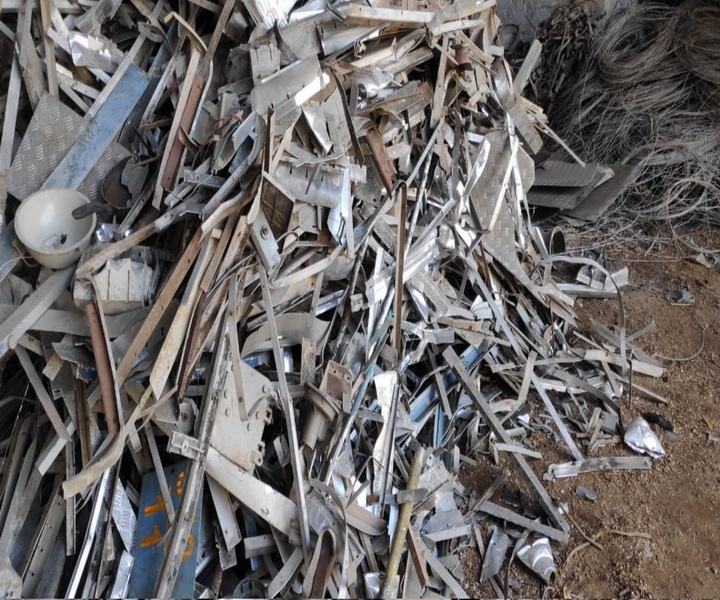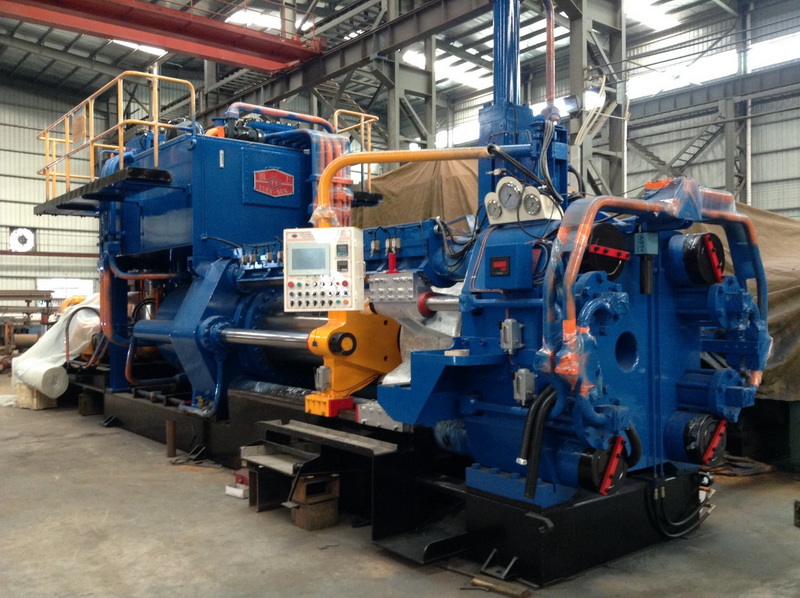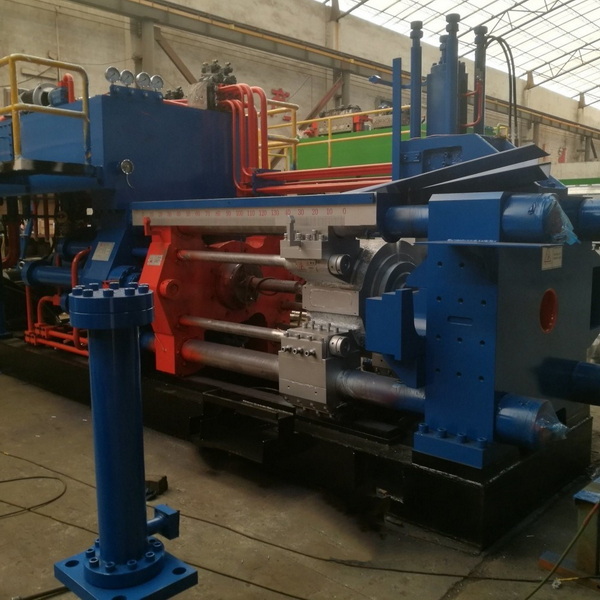Content Menu
● Introduction to Aluminum Extrusion Scrap
● What is Aluminum Extrusion?
● Types of Aluminum Extrusion Scrap
● The Importance of Aluminum Extrusion Recycling
● The Metal Recycling Process for Aluminum Extrusion Scrap
● Scrap Metal Grades and Aluminum 6063 Extrusion
● Recycling Aluminum Profiles: Challenges and Opportunities
● The Scrap Aluminum Market: Trends and Dynamics
● Sustainable Aluminum Production: The Role of Extrusion Scrap
● Aluminum Extrusion Manufacturing: Minimizing Scrap Generation
● The Future of Aluminum Extrusion Scrap Recycling
● Conclusion
● Frequently Asked Questions
>> Q1: What is the difference between new and old aluminum extrusion scrap?
>> Q2: Why is Aluminum 6063 Extrusion Scrap considered valuable?
>> Q3: How does recycling aluminum extrusion scrap contribute to energy conservation?
>> Q4: What are some challenges in recycling aluminum profiles?
>> Q5: How is the scrap aluminum market influenced by global factors?
Introduction to Aluminum Extrusion Scrap
Aluminum extrusion scrap is a valuable resource in the metal recycling industry, playing a crucial role in sustainable aluminum production and the circular economy. As industries strive for more environmentally friendly practices, understanding the nature, value, and recycling processes of aluminum extrusion scrap becomes increasingly important. This comprehensive guide will delve into the world of aluminum extrusion scrap, exploring its origins, types, recycling methods, and market dynamics.
What is Aluminum Extrusion?
Before we dive into the specifics of aluminum extrusion scrap, it's essential to understand the extrusion process itself. Aluminum extrusion is a manufacturing technique used to create objects with a fixed cross-sectional profile. In this process, heated aluminum billets are forced through a die, shaping the metal into the desired form. This method is widely used to produce a variety of products, including:
- Window and door frames
- Heat sinks for electronic devices
- Automotive components
- Construction materials
- Furniture parts
The versatility of aluminum extrusion makes it a popular choice across various industries, contributing to the abundance of aluminum extrusion scrap in the recycling stream.

Types of Aluminum Extrusion Scrap
Aluminum extrusion scrap comes in various forms, each with its own characteristics and value in the recycling market. Some common types include:
1. New scrap: This is generated during the manufacturing process and is typically clean and uncontaminated.
2. Old scrap: This comes from end-of-life products and may require more processing due to potential contamination.
3. Mixed low-copper clips: These are clean aluminum extrusions with a low copper content.
4. 6063 aluminum scrap: This is one of the most valuable types of aluminum extrusion scrap, often sourced from architectural applications.
5. Painted siding: Aluminum siding with paint or coating that needs to be removed before recycling.
Understanding these different types is crucial for proper sorting and maximizing the value of aluminum extrusion scrap.
The Importance of Aluminum Extrusion Recycling
Recycling aluminum extrusion scrap offers numerous benefits, making it a critical component of sustainable aluminum production:
1. Energy conservation: Recycling aluminum requires only about 5% of the energy needed to produce primary aluminum from bauxite ore.
2. Reduced carbon footprint: The lower energy requirement translates to significantly reduced greenhouse gas emissions.
3. Conservation of natural resources: Recycling decreases the need for bauxite mining, preserving natural habitats and reducing environmental impact.
4. Economic benefits: The aluminum recycling industry creates jobs and contributes to the economy.
5. Infinite recyclability: Aluminum can be recycled indefinitely without losing its properties, making it an ideal material for a circular economy.
The Metal Recycling Process for Aluminum Extrusion Scrap
The recycling process for aluminum extrusion scrap involves several steps:
1. Collection: Scrap is gathered from various sources, including manufacturing facilities, construction sites, and recycling centers.
2. Sorting: The scrap is separated based on alloy type and quality. This step is crucial for maintaining the purity of the recycled aluminum.
3. Cleaning: Contaminants such as paint, coatings, or other materials are removed to ensure high-quality recycled aluminum.
4. Shredding: The scrap is cut into smaller pieces to facilitate melting.
5. Melting: The shredded scrap is melted in large furnaces at temperatures around 750°C (1382°F).
6. Purification: The molten aluminum is treated to remove impurities and adjust the alloy composition if necessary.
7. Casting: The purified aluminum is cast into ingots or billets for use in new manufacturing processes.
This efficient process allows for the rapid turnaround of aluminum extrusion scrap into new products, supporting the circular economy and sustainable manufacturing practices.
Scrap Metal Grades and Aluminum 6063 Extrusion
Understanding scrap metal grades is essential for maximizing the value of aluminum extrusion scrap. The Institute of Scrap Recycling Industries (ISRI) has established guidelines for classifying different types of scrap metal. For aluminum extrusion scrap, one of the most sought-after grades is Aluminum 6063 Extrusion Scrap.
Aluminum 6063 is an alloy known for its excellent extrudability, making it ideal for architectural and structural applications. It contains magnesium and silicon as the primary alloying elements, providing a good balance of strength and formability. When recycling Aluminum 6063 Extrusion Scrap, it's crucial to keep it separate from other grades to maintain its value and ensure it can be recycled into high-quality products.
Common sources of Aluminum 6063 Extrusion Scrap include:
- Window frames
- Door frames
- Railings
- Architectural trim
- Pipe and tubing
Recyclers and scrap yards often pay premium prices for clean, well-sorted Aluminum 6063 Extrusion Scrap due to its consistent composition and wide range of applications in new products.

Recycling Aluminum Profiles: Challenges and Opportunities
Aluminum profiles, which are extruded shapes used in various applications, present both challenges and opportunities in the recycling process. The main challenges include:
1. Coatings and finishes: Many aluminum profiles are anodized or painted, requiring additional processing to remove these coatings before recycling.
2. Mixed alloys: Different alloys may be used in a single product, making separation and sorting more complex.
3. Contamination: Profiles may contain non-aluminum components like rubber gaskets or plastic inserts that need to be removed.
Despite these challenges, recycling aluminum profiles offers significant opportunities:
1. High-value scrap: Clean, sorted aluminum profile scrap can command premium prices in the recycling market.
2. Closed-loop recycling: Many manufacturers are implementing closed-loop systems where scrap from their production processes is directly recycled into new products.
3. Innovation in recycling technologies: Advanced sorting and separation technologies are being developed to address the challenges of recycling complex aluminum products.
4. Sustainable building practices: The construction industry is increasingly focusing on using recyclable materials, creating a growing market for recycled aluminum profiles.
By addressing these challenges and capitalizing on the opportunities, the industry can improve the efficiency and effectiveness of recycling aluminum profiles, contributing to a more sustainable future.
The Scrap Aluminum Market: Trends and Dynamics
The scrap aluminum market is a dynamic and essential component of the global aluminum industry. Several factors influence the market for aluminum extrusion scrap:
1. Global demand: The increasing use of aluminum in industries such as automotive, aerospace, and construction drives demand for both primary and recycled aluminum.
2. Price fluctuations: Scrap aluminum prices are closely tied to primary aluminum prices, which can be volatile due to factors like energy costs, trade policies, and global economic conditions.
3. Environmental regulations: Stricter environmental policies in many countries are encouraging increased use of recycled materials, boosting demand for scrap aluminum.
4. Technological advancements: Improvements in recycling technologies are making it more cost-effective to process and reuse aluminum scrap.
5. International trade: The global nature of the scrap aluminum market means that trade policies and international relations can significantly impact prices and availability.
6. Quality standards: As manufacturers demand higher quality recycled aluminum, there's an increasing focus on improving sorting and processing techniques for scrap.
Understanding these market dynamics is crucial for both suppliers and buyers of aluminum extrusion scrap, allowing them to make informed decisions and capitalize on market opportunities.
Sustainable Aluminum Production: The Role of Extrusion Scrap
Aluminum extrusion scrap plays a vital role in sustainable aluminum production, contributing to the industry's efforts to reduce its environmental impact. Here are some key aspects of how extrusion scrap supports sustainability:
1. Reduced energy consumption: Recycling aluminum extrusion scrap requires significantly less energy compared to primary aluminum production, leading to substantial energy savings.
2. Lower carbon emissions: The reduced energy requirement translates directly into lower greenhouse gas emissions, helping combat climate change.
3. Conservation of natural resources: By recycling aluminum extrusion scrap, the industry reduces the need for bauxite mining, preserving natural habitats and biodiversity.
4. Circular economy: The ability to recycle aluminum indefinitely without loss of quality supports the principles of a circular economy, where materials are reused and recycled rather than discarded.
5. Waste reduction: Recycling extrusion scrap helps minimize waste in landfills, contributing to overall waste reduction efforts.
6. Innovation in sustainable products: The availability of high-quality recycled aluminum from extrusion scrap enables manufacturers to create more sustainable products with lower environmental footprints.
As the world increasingly focuses on sustainability, the role of aluminum extrusion scrap in supporting eco-friendly manufacturing practices becomes ever more critical.
Aluminum Extrusion Manufacturing: Minimizing Scrap Generation
While recycling aluminum extrusion scrap is essential, minimizing scrap generation during the manufacturing process is equally important for sustainability. Here are some strategies employed in aluminum extrusion manufacturing to reduce scrap:
1. Optimized die design: Carefully designed extrusion dies can minimize material waste and reduce the likelihood of defects.
2. Process control: Advanced monitoring and control systems help maintain consistent extrusion parameters, reducing the occurrence of off-spec products.
3. Efficient billet sizing: Proper sizing of aluminum billets for each extrusion run minimizes end scrap.
4. Continuous improvement: Implementing lean manufacturing principles and continuous improvement processes helps identify and eliminate sources of waste.
5. Employee training: Well-trained operators can better manage the extrusion process, reducing errors that lead to scrap generation.
6. Scrap segregation: Properly segregating different types of scrap at the source facilitates easier recycling and maintains the value of the scrap.
7. Closed-loop systems: Implementing on-site recycling systems allows manufacturers to directly reuse their own scrap, reducing transportation and processing costs.
By focusing on these aspects, aluminum extrusion manufacturers can significantly reduce scrap generation, improving both their environmental performance and economic efficiency.
The Future of Aluminum Extrusion Scrap Recycling
As technology advances and environmental concerns grow, the future of aluminum extrusion scrap recycling looks promising. Several trends and innovations are shaping the industry:
1. Advanced sorting technologies: AI-powered sorting systems and spectroscopic techniques are improving the accuracy and efficiency of scrap separation.
2. Improved melting technologies: New furnace designs and melting processes are increasing energy efficiency and reducing emissions in the recycling process.
3. Blockchain for traceability: Blockchain technology is being explored to improve the traceability of aluminum scrap throughout the recycling chain.
4. Increased focus on closed-loop recycling: More manufacturers are implementing closed-loop systems to recycle their own scrap directly.
5. Development of new alloys: Researchers are working on developing new aluminum alloys that are easier to recycle without losing performance characteristics.
6. Policy support: Governments worldwide are implementing policies to encourage the use of recycled materials, boosting the demand for aluminum extrusion scrap.
7. Consumer awareness: Growing consumer awareness about sustainability is driving demand for products made from recycled materials, including aluminum.
These developments suggest a bright future for aluminum extrusion scrap recycling, with increasing efficiency, sustainability, and economic value.
Conclusion
Aluminum extrusion scrap is a valuable resource that plays a crucial role in sustainable aluminum production and the circular economy. From understanding its origins in the extrusion process to exploring its various types and grades, we've seen how this material contributes to energy conservation, reduced carbon emissions, and resource preservation.
The recycling process for aluminum extrusion scrap, while facing some challenges, offers numerous opportunities for innovation and improvement. As the global scrap aluminum market continues to evolve, influenced by factors such as technological advancements and environmental regulations, the importance of efficient recycling practices becomes ever more apparent.
Looking to the future, the aluminum extrusion scrap industry is poised for further growth and innovation. With advancements in sorting and processing technologies, increased focus on closed-loop recycling, and growing awareness of sustainability issues, the recycling of aluminum extrusion scrap will continue to play a vital role in creating a more sustainable and circular aluminum industry.
By understanding and optimizing the use of aluminum extrusion scrap, we can contribute to a more sustainable future, where valuable resources are conserved, energy is saved, and environmental impact is minimized. As consumers, manufacturers, and recyclers, we all have a part to play in realizing the full potential of aluminum extrusion scrap recycling.

Frequently Asked Questions
Q1: What is the difference between new and old aluminum extrusion scrap?
A1: New aluminum extrusion scrap is generated during the manufacturing process and is typically clean and uncontaminated. Old aluminum extrusion scrap comes from end-of-life products and may require more processing due to potential contamination from use or exposure to the elements.
Q2: Why is Aluminum 6063 Extrusion Scrap considered valuable?
A2: Aluminum 6063 Extrusion Scrap is highly valued because it has a consistent composition with excellent extrudability. It's commonly used in architectural applications, making it abundant and easy to identify. Its purity and known composition make it ideal for recycling into high-quality products.
Q3: How does recycling aluminum extrusion scrap contribute to energy conservation?
A3: Recycling aluminum extrusion scrap requires only about 5% of the energy needed to produce primary aluminum from bauxite ore. This significant energy saving translates to reduced carbon emissions and lower production costs, making it an environmentally friendly and economically viable process.
Q4: What are some challenges in recycling aluminum profiles?
A4: Some challenges in recycling aluminum profiles include removing coatings and finishes, separating different alloys that may be used in a single product, and removing non-aluminum components like rubber gaskets or plastic inserts. These challenges require specialized sorting and processing techniques.
Q5: How is the scrap aluminum market influenced by global factors?
A5: The scrap aluminum market is influenced by various global factors, including overall demand for aluminum, price fluctuations in primary aluminum, environmental regulations, technological advancements in recycling, international trade policies, and quality standards set by manufacturers. These factors can affect prices, availability, and the overall dynamics of the scrap aluminum market.






















